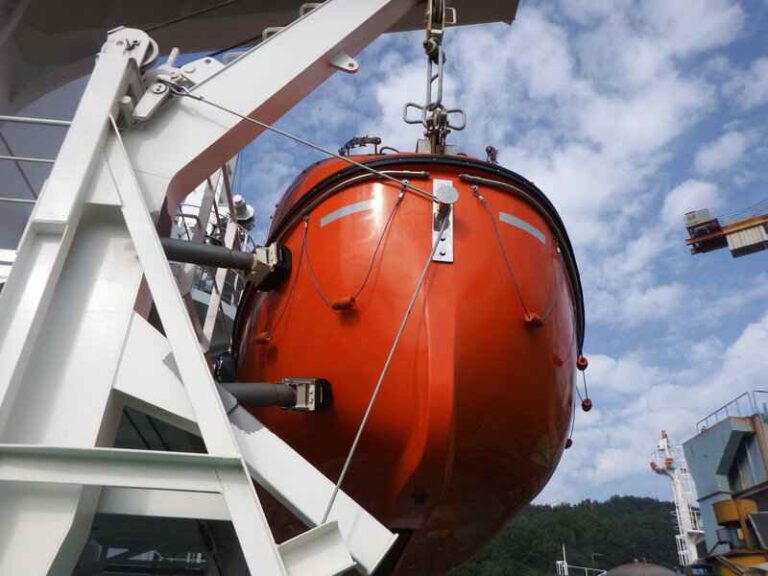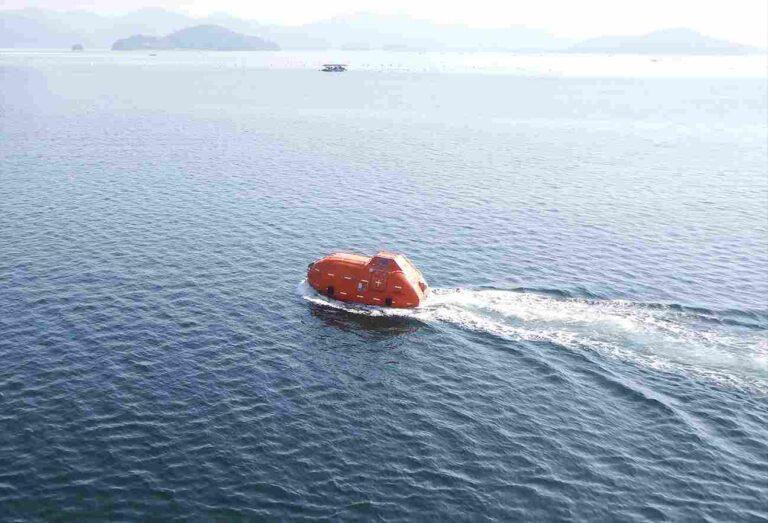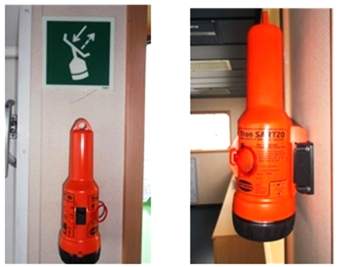
If you work on a ship, safety at sea should be your top priority. One way to stay safe is by having a dependable lifeboat on board. Accidents can occur unexpectedly, so it’s important to be ready with the proper equipment to increase your chances of survival. Lifeboats are specifically designed to serve as an escape route in emergencies and to rescue both the crew and passengers.
Types of Lifeboats
Different vessels use several types of lifeboats. Below are the most common types, each with different features and benefits.
- Free-fall lifeboats: These type lifeboats are designed to be release from a height, allowing it to quickly maneuver in water and reach those in need. Large vessels and oil rigs frequently utilize this type.
- Conventional lifeboats: These are the most traditional type of lifeboat and are still commonly used today. They are launched from the side of a vessel and can be either motorized or propelled manually.
- Hybrid lifeboats: These lifeboats combine the features of both conventional and free-fall lifeboats, making them versatile and highly effective in emergency situations.
Choosing the right type of lifeboat depends on a variety of factors, including the size of the vessel, the number of passengers, and the specific requirements of the journey. By understanding the different types of lifeboats available, you can make an informed decision and ensure the safety of everyone onboard.
Remember, having a lifeboat on board is not enough – it’s important to also ensure that it is properly maintained and ready to use at a moment’s notice.
Lifeboat Functions
Lifeboats have several functions in ensuring safety at sea. Let’s tackle some of those.
- Emergency evacuation: In case of an emergency, lifeboats provide a means of escape for crew and passengers. They can quickly and safely transport people away from the vessel and to safety.
- Crew and passenger rescue: Lifeboats are also used for rescuing crew and passengers who may have fallen overboard or become stranded in the water. They are equipped with rescue gear and trained crew members to ensure that everyone is brought to safety.
- Survival at sea: In some cases, lifeboats may need to be used for survival at sea for an extended period of time. They are equipped with supplies such as food, water, and medical equipment to ensure the survival of those onboard until help arrives.

Lifeboat Regulations
SOLAS Regulations for Lifeboats
In order to ensure that lifeboats are effective in emergency situations, there are several regulations governing their design, maintenance, and use. Let’s discuss some of these regulations.
The International Convention for the Safety of Life at Sea (SOLAS) is an international maritime treaty that sets out detailed requirements for the design, construction, and equipment of ships, including lifeboats. SOLAS regulations for lifeboats cover a range of aspects, including their design, capacity, and equipment.
For example, SOLAS requires that lifeboats be capable of launching quickly and safely, and that they can be maneuvered effectively in both calm and rough seas. They must also be equipped with appropriate lighting, communication equipment, and survival gear to ensure that they can be used effectively in an emergency.
In addition to design requirements, SOLAS also sets out guidelines for testing and maintenance to ensure that lifeboats are always in good working order. These guidelines cover regular inspections and testing of equipment and systems, as well as requirements for regular maintenance to prevent corrosion and other forms of damage.
By complying with SOLAS regulations for lifeboats, vessel owners can ensure that their lifeboats are designed and equipped to perform effectively in emergency situations. This not only protects the safety of crew and passengers but also helps to prevent environmental damage and financial losses.
Inspection and Maintenance Requirements
Lifeboats must be inspected and maintained regularly to ensure that they are ready for use in an emergency. This includes regular testing of equipment and systems, such as the release mechanism, propulsion system, and communication equipment, to ensure that they are functioning correctly. Regular maintenance is also essential to prevent corrosion and other forms of damage that can compromise the effectiveness of the lifeboat.
In addition, lifeboats must be inspected and tested regularly to ensure that they meet SOLAS and other applicable regulations. This includes inspections of the hull, equipment, and gear, as well as functional tests to ensure that the lifeboat can be launched quickly and safely.
Inspection and maintenance must be carried out by qualified personnel, who should be trained in the relevant regulations and procedures. Any defects or deficiencies identified during inspections or tests must be promptly addressed to ensure that the lifeboat is always ready for use in an emergency.
By ensuring that lifeboats are inspected and maintained regularly, vessel owners can help to prevent accidents and protect the safety of crew and passengers. They can also help to avoid costly fines and legal action resulting from non-compliance with regulations.
Crew Training and Drills
Crew members who are responsible for operating lifeboats must be properly trained in their use. This includes regular training sessions and drills to ensure that everyone knows what to do in an emergency and that the lifeboats can be launched quickly and safely.Training should cover a range of topics, including the proper use of lifeboat equipment, communications procedures, and survival techniques. Crew members must also be familiar with the vessel’s emergency response plan and their individual roles and responsibilities during an emergency.
Regular drills should be conducted to ensure that crew members are prepared to respond effectively in an emergency. These drills should be carried out in different conditions, including rough seas and inclement weather, to simulate a real emergency scenario. Drills should also involve all crew members who may be involved in launching and operating the lifeboats, including the master, officers, and seafarers.
In addition to regular drills, crew members must also receive refresher training and instruction whenever new equipment is introduced or changes are made to the vessel’s emergency response plan.
By ensuring that crew members are properly trained and regularly drilled in the use of lifeboats, vessel owners can help to protect the safety of crew and passengers in an emergency. They can also help to minimize the risk of accidents and environmental damage resulting from improper use of lifeboats.
Conclusion
By complying with these regulations, vessel owners can ensure that their lifeboats are always ready for use and can effectively perform their functions effectively in an emergency.
It’s also worth noting that compliance with these regulations is not only a matter of safety but also a legal requirement. Failure to comply with SOLAS regulations and other applicable laws can result in serious consequences, including fines and legal action.




